How to Test the Standard PLA
Standard PLA is the most basic material in the 3D printing industrial because it’s degradable, easy-to-use, and has good surface effect but little string. The standard PLA has not only the largest audience, but also the most abundant colors. PLA in various colors are emerging in endlessly.
3D printer technology and filaments are mutually promoting and improving. An excellent filament can make up for the shortcomings of the printer and determine the lower limit of the printing level. Then let's look at the test of standard PLA.
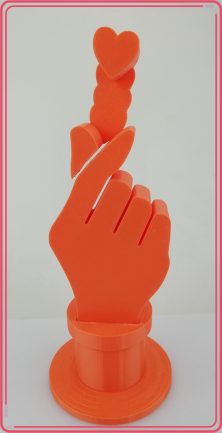
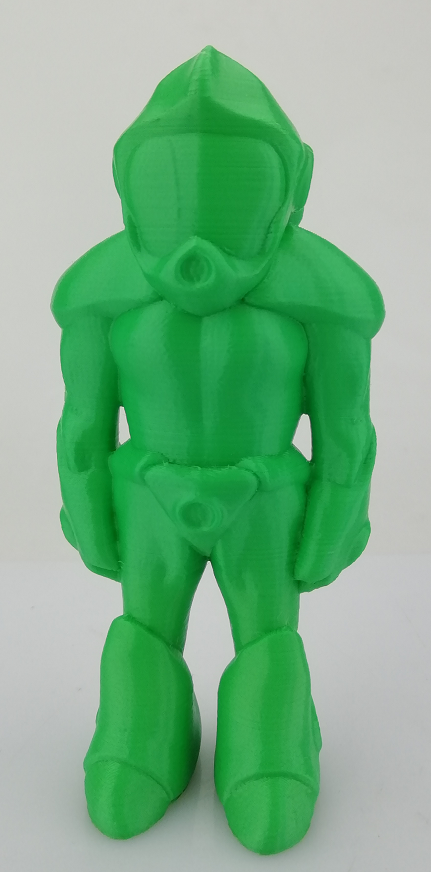
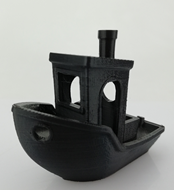
The physical property of standard PLA decides the performances of its prints, including toughness, shrink rate, water absorbency, printing temperature and so on.
Due to the superior properties of raw materials, the water absorption of standard PLA is the lowest among all filaments.
|
Standard PLA Parameters |
||
|
physical properties: |
Typical Value: |
Method: |
|
Peak melt Temperature: |
167±5℃ |
ISO 11357 |
|
Glass Transition Temperature: |
55-60 |
ISO 11357 |
|
MFR[g/10min](1):210℃ / 2.16KG |
7-15 |
ISO 1133 |
|
Specific Gravity[g/cm3]: |
1.24 g/cm³ |
ISO 1183 |
|
moisture absorption 24hr[%](2) : |
≤250 ppm |
/ |
|
Heat Deflection Temperature(0,45MPa): |
55 |
ISO 75 |
|
Tensile Yield Strength Filament[MPa]: |
60 |
ISO 527-1 |
The parameters in the above table are measured by professional testing instruments.
Diameter and Tolerance
Diameter and tolerance are the very basic parameters that we must know before our test.
And high precision of filament can make a constant diameter and make filament hardly get clogged. After testing via a micrometer, we know the diameter of Marble filament is 1.75mm with a tolerance ±0.03.
In the production, the diameter of the filament can be set on the precise equipment. However, the equipment with different precision can produce filaments with different diameters. To remove this hassle, we apply the equipment with 1.75±0.03mm high precision. Next, we use micrometer to do a spot check of the precision of produced filaments.
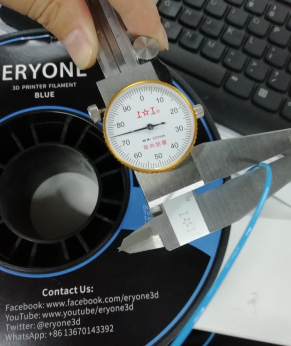
|
Test Object |
Standard PLA |
Test Contents |
Diameter and Tolerance |
Time |
2020 |
Testing Tool |
Micrometer |
Test Method |
A test point for every 30cm. There are 12 testing points. |
|||
|
Color |
Data 1 |
Data 2 |
Data 3 |
Data 4 |
Data 5 |
Data 6 |
Data 7 |
Data 8 |
Data 9 |
Data 10 |
Data 11 |
Data 12 |
|
Blue(mm) |
1.75 |
1.74 |
1.75 |
1.74 |
1.74 |
1.75 |
1.76 |
1.75 |
1.75 |
1.74 |
1.75 |
1.76 |
From the testing data in the table, there are 12 test points for every filament. There is a 30cm distance between the two test points. As is the micrometer shown, the 12 date indicate that the filaments in different colors has reached the high precision 1.75±0.03mm. So standard filament meets the standards of the diameter.
Temperature Property
As we know, PLA filament is user-friendly for our beginners because it’s easy to use. To get a wonderful print, we must make sure that we know the printing temperature well. The printing temperature directly influences the constant diameter and the liquidity of the output filament. For printing temperature, we set the temperature as some points within 190-220℃.
|
Test Object |
Standard PLA |
Time |
2020 |
|
Test Method |
Print at some different temperature points. |
||
|
Color |
195℃ |
205℃ |
220℃ |
|
Blue |
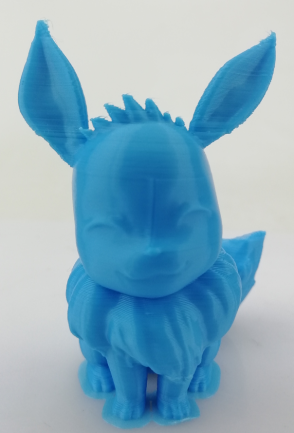 |
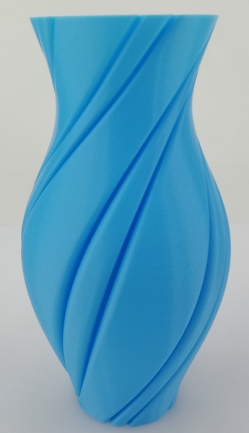 |
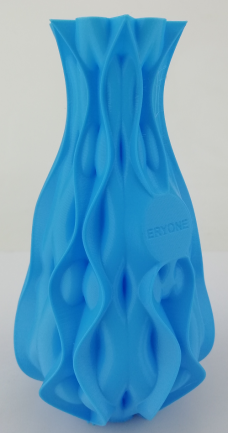 |
As shown in the table above, the printing temperature points of the PLA filament 195℃, 205℃ and 220℃, under which the output filament has a constant diameter, smooth fluidity and little string. Therefore, when the temperature ranges 190-220℃, the Standard PLA filament can reach a high-quality printing effect.
Matching Rate of Speed and Temperature
The matching rate of speed and temperature is also an factor that affects the printing effect. Also, it reflects how customers get familiar with the slicing of this Standard PLA filament.
We choose 4 temperature points to test. At a certain temperature, we set different printing speed as the print gets higher. In this way, we can find the optimal match of temperature and speed.
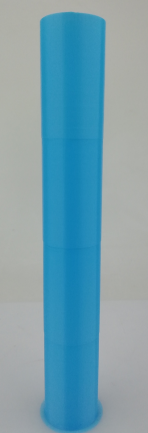
|
Test Object |
Standard PLA |
Time |
2020 |
Test Method |
At a certain temperature, we set different printing speed as the print gets higher. |
|
|
Pinter Type |
Ender 3 |
prusa i3 |
CR-10 |
Thinker SE |
ER-20 |
mega-s |
|
The temperature matches the speed |
195℃:≤45mm/s; 225℃:≤65mm/s; |
195℃:≤50mm/s; 225℃:≤75mm/s; |
195℃:≤45mm/s; 225℃:≤65mm/s; |
195℃:≤45mm/s; 225℃:≤65mm/s; |
195℃:≤45mm/s; 225℃:≤75mm/s; |
195℃:≤45mm/s; 225℃:≤65mm/s; |
The table above shows the optimum matching rate of speed and temperature on mainstream printers. We can refer to the table above to slice.
For standard PLA, the speed should be lower; in this way, the prints will have smoother surface but less string.
The Adhesivity of the Heated Bed
Standard PLA has lower temperature requirements for heated beds. The following are the temperature requirements for common heated beds.
|
Test Object |
Standard PLA |
Time |
2020 |
Test Method |
Print on the different type of bed to test the sticking temperature |
|
Bed Type |
PEI Flexible Bed Adhesive |
Glass Bed |
Microporous Coated Glass Bed |
PEI Bed Adhesive |
Ink-coated Glass Bed |
|
Sticking Temperature |
55-65℃ |
65-70℃ |
60-65℃ |
55-65℃ |
60-65℃ |
We can know from the table that Standard PLA has a high compatibility with the mainstream bed.
Compatibility of 3D Printers
Without a printer, the filament can not produce a print. The compatibility of the printer should also be taken into concern.
|
Test Object |
Standard PLA |
Time |
2020 |
Test Method |
Print via mainstream printers |
|
Test Color |
Blue |
||||
|
Test Type |
Thinker SE、CR-10、Ender 3、Mega-s、ER-20、Prusa i3 |
||||
|
Result |
Within 190-220℃, the above printers can print normally and for the specific recommended parameters, you can refer to the specification. |
||||
From the above test process, Standard PLA filament applies to most FDM printers in the market. When you use different printers, the slicing parameters should be different. The retracting length set for Bowden and direct drive printers should be different. That will be given in the product specification and you can refer it.
Retracting and String
Generally speaking, proper retracting value can decrease string rate. After a few times of testing, we get the following data.
With an inconstant printer, we test to find that the optimum retracting value for a certain temperature rang. The standard PLA print in the picture has little strings.
After comprehensive testing of the above projects, we give you reference of parameters—Bowden extruder printer: printing temperature 200-220℃, retracting length 4-7mm, retracting speed 50-70mm/s; direct-drive extruder printer: printing temperature 200-220℃, retracting speed 0.8-1mm, retracting speed 35-40mm/s.
205℃
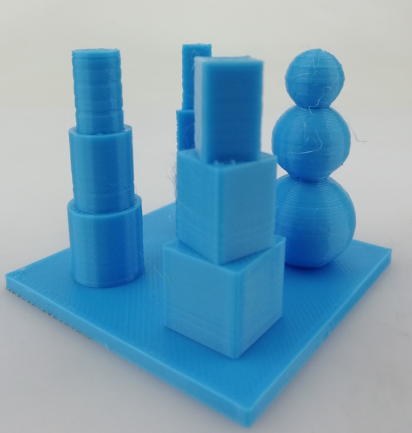
In conclusion, the standard PLA is easy to use and compatible with most printers, can adapt to a wide temperature range and has smooth. The extruded filament has constant diameters. In terms of printing habits and usage, Standard PLA is user-friendly.









